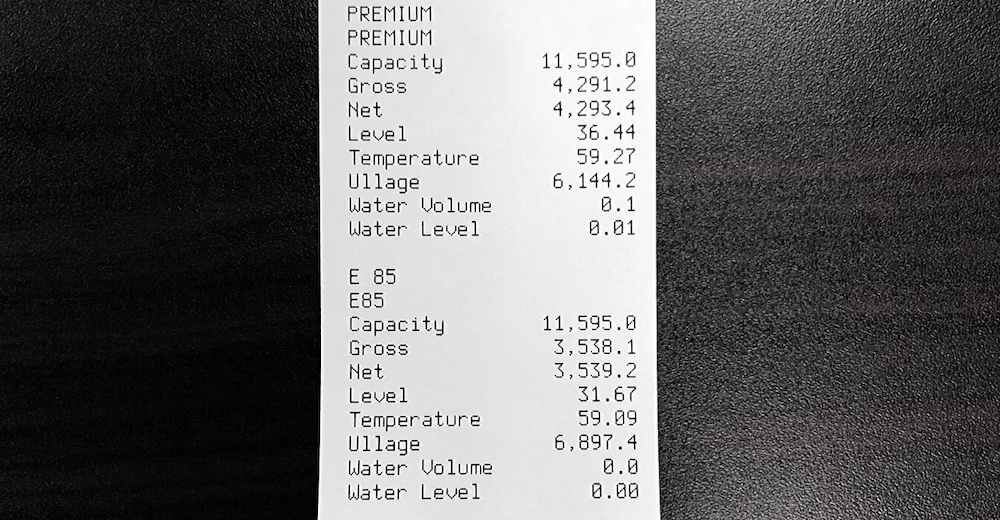Water in the Tank
“I just filled up my car at YOUR dispenser and now it won’t run!”
Uh-oh. You look outside and see another car is stalled out trying to leave the parking lot. You realize that these customers have just pumped water from your system into their gas tanks! What a nightmare!
Hopefully, this hasn’t happened to you. Every owner/operator should be taking steps to prevent water from getting into their underground storage tanks. A bad gas claim is terrible, but what might be even worse is figuring out how the water got into the UST in the first place. If the UST has a leak, the water could harbor microbes or damage the inside of your tank.
Monitoring
How can you know if there is water in your tank? Well, obviously being approached by an angry customer is on way to find out, though it will certainly be expensive. Monthly inventory records are an excellent indicator of water levels in a tank and are much, much less expensive! Remember that water is an indicator or a potentially bigger problem, like a leaking tank system. It is always better to find and stop a leak early instead of dealing with the consequences later. Preventative maintenance is key!
Roughly 80% of UST facilities have an automatic tank gauge (ATG) on site. Many ATGs provide a printout indicating fuel and water levels and are usually set to alarm if the water level exceeds 1 inch. Someone should be reviewing these printouts once a day. Water levels between 1 and 2 inches require immediate attention. If levels exceed 2 inches, it’s recommended that the tank be taken out of service until it can be addressed. Readings from your tank monitor should be verified with actual stick measurements, using a water-finding paste.

For those sites that don’t have an ATG, fuel measurements should still be collected daily. Operators should apply a water-finding paste to the bottom 3 inches of the stick to check for water at least once a month. Since water is heavier than fuel, it will collect at the bottom of the tank, so it’s very important that the stick reached the bottom. Contact your service company for verification on which indicator paste to use, as it can vary depending on the type of fuel being stored.
Causes
What actually causes water to accumulate inside a storage tank? Condensation inside the tank can cause some water to develop, however it typically doesn’t produce enough water to be problematic at most facilities. Other ways water can enter the tank is by loose fittings and caps on the tank-top, leaking drain plug in the delivery spill basin, damaged vent line draining water back to the tank, water in the transport delivery, or worst case scenario is a tank with one or more holes in it. In all cases, you obviously want to detect the problem as quickly as possible to determine the source and correct the problem. If you have more than 1 inch of water in your tank, contact your service company immediately for troubleshooting assistance.
Removal
Once it has been determined that water is accumulating in an UST, the owner/operator should contact their service company to safely and appropriately remove the water. Once the water has encountered the petroleum product, it becomes a hazardous substance. A licensed service company will know the proper procedures for handling and disposing of the hazard in accordance with regulations.
Concerns
Water in the tank can affect the quality of fuel, especially when it is blended with ethanol. Even small quantities of water in ethanol blends may cause phase separation of the fuel resulting in water at the bottom of the tank. Higher ethanol blends have even less tolerance for water. Recent studies have also shown that the mixture of ethanol and water creates a corrosive environment in the UST components. When fuel is drawn from the tank by either suction or pressurized delivery to the dispensers, it is pulled from the bottom of the tank, which is exactly where water will accumulate. So, even if the water is only 1 inch deep, it can still be very problematic.
If you should discover that your tank is leaking, please remember to report the incident to your insurance company and your state regulator immediately. Many states require that you report a suspected release within 24 hours. It is critical that the issue be addressed as quickly as possible.

